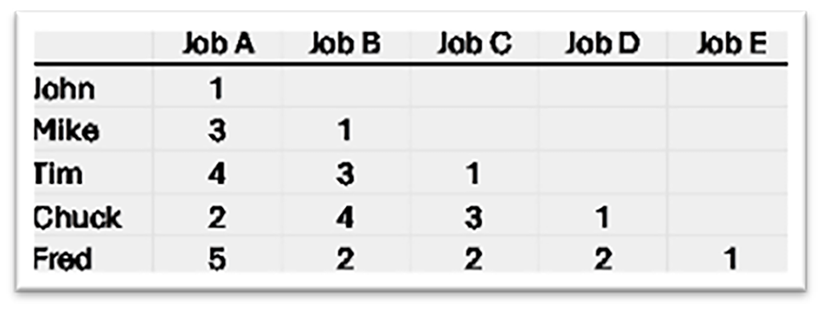Introduction
From the network of actors we refer to as a “market,” how do people know who should do which activities?
Many projects require numerous steps for completion. To complete those steps in a timely manner requires the employment of several workers. Simply dividing a project into different parts, however, does not resolve the problem of deciding who does what. Comparative advantage creates employment opportunities for all people wanting to work.
Comparative Advantage
Because equality does not exist in the real world, we find that some individuals can perform different jobs better than other individuals. How, then, do managers decide which Job each worker should perform? The answer comes from what we refer to as “comparative advantage.”
The multi-talented individuals should perform the tasks for which they are best qualified — for which they have a comparative advantage. Managers should distribute each succeeding task to those who have the best qualifications to perform each of the remaining tasks.
Comparative Advantage in Action
Good managers apply the concept of comparative advantage, even though they might not know the term.
An example helps describe the application of the principle of comparative advantage.
In this hypothetical example, the factory that manufactures those well-known Widgets has broken the process into five jobs: A, B, C, D, and E. The company has five workers (John, Mike, Tim, Chuck, and Fred), each of whom can perform any one of the jobs.
The manager, Alfonso, could simply roll dice or use some other “random” selection process, and the Widgets would get assembled. But, Alfonso knows this will not produce the best results.
To help in his selection Alfonso creates a decision matrix of sorts. He lists the workers in a column on the left and the jobs across the top. He ranks the capabilities of the workers (using his proprietary ranking score) to perform each Job. I have recreated Alfonso‘s chart below.
The absolute advantages do not matter. For example, John may have the capability of performing all of the Jobs better than any of the other four workers. The important fact remains that of all the jobs, John performs Job A the best. The same holds true of the other workers and the respective Job assignments. It does not matter that Mike can do Jobs B through E better than the remaining three workers. Mike has a comparative advantage with Job B.
The next chart summarizes the job assignments after the selections based on comparative advantages.
Conclusion
Many people do not fully understand the concept of comparative advantage to their disadvantage. By understanding the concept, Alfonso makes better Widgets than many of his competitors; as a result, he sells more Widgets.
The influence of comparative advantage operates in the market spontaneously. Workers who work smarter and harder tend to get better jobs and earn more. Businesses exploit their comparative advantage tend gain market share and make more profits.
Understanding the concept of comparative advantage will help us understand the influence of business processes, exchanges, and market intervention in other situations.






I had to laugh when I read "Workers who work smarter and harder tend to get better jobs and earn more." I recalled the recent spate of politicians and corporations who supported the DEI movement. What a waste of energy that was!!